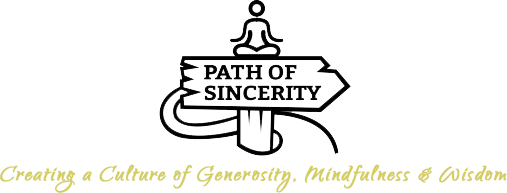
When we sit down, relax and bring our intention to present moment awareness, some days it’s quite pleasant and effortless, but other days it’s one brick wall after another. There’s three basic ways to handle this:
At times, it can be useful to actually stop meditating—if, say, we’re just falling asleep in a sitting position, it might be more worth our while to take a nap instead. However, if we just quit every time there’s a brick wall, we don’t learn anything, we don’t develop, we don’t realize our deeper sincerity.
Secondly, we can use sheer willpower to force ourselves to keep sitting and endure, pounding our way through the sit. We could power through with the aid of a tool, a “meditative sledgehammer,” like mindfulness of breathing, mantra, counting thoughts or whatever else. We could also just psych ourselves into an attitude of intensity and determination.
Some people get extremely skilled at the willpower route; and, to be sure, it’s a useful life skill. Nonetheless, using sledgehammers can be highly exhausting and so this route is not very sustainable if we revert to it every time a challenge comes up.
Thirdly, we can channel our wisdom. This basically means pausing, recognizing the fact that we’re in front of a brick wall—like restlessness—and figuring out how we might be able to climb over it.
This could mean a little skillful thinking, like contemplating (as if for the first time) our core intention or values, or why we even are meditating to begin with. It could also mean shifting our practice to be a bit more gentle and relaxation-inducing; for example, instead of trying to observe the breath or do some mantra, just let go of all doing, sinking into the body sensations and resting in that state of relaxing.
Another great wisdom tactic is to turn our awareness directly at the brick wall. Learn about it. Study it. Get interested in it. In the case of restlessness, maybe look at exactly what that feels like in the body. Maybe see all the thoughts it produces; and, see how those thoughts and bodily feelings are connected. Or, perhaps, investigate why we’re restless; aka, ask ourselves what emotional states are underneath it—like fear, aversion, tiredness or attachment.
…..
Each of these three methods has its time and place; however, over the years, I’ve come to appreciate more and more the use of wisdom. It’s much smoother to use the gentle route—climbing.
The possibilities of wisdom I listed are just suggestions. Most important is to channel your own wisdom. Recognize that this is your brick wall. You’ve surely encountered this situation before. You’ve probably sometimes gotten through it and other times turned away. You probably have a deep intuitive sense of how worthwhile it is to get to the other side.
So, ask yourself with great sincerity and willingness, “what’s the best way to handle this brick wall?” Let an organic response come to the surface—dare to follow it.
photo credit: Martin
